Apple iPad mini with Retina Display: Reviewed
by Anand Lal Shimpi on November 16, 2013 8:00 AM EST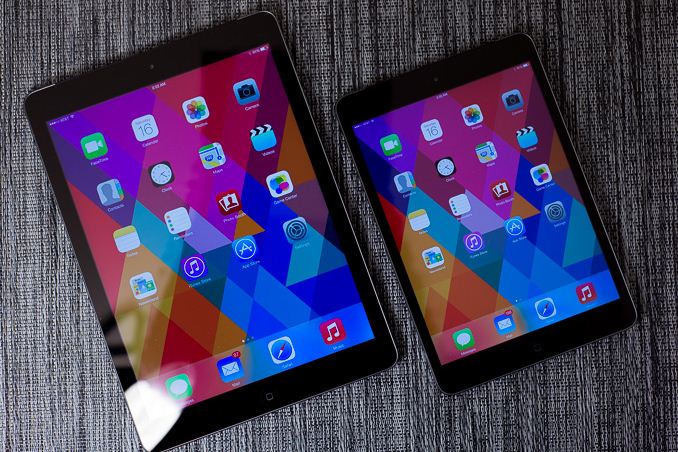
I suppose there’s only one way to start this review, and that’s by looking back at last year’s iPad mini review. In that review I had a section dedicated to the possibility of an iPad mini with Retina Display. The low resolution display and slow SoC were my only two real complaints about the first iPad mini. I listed a bunch of options that Apple had for the mini going forward:
“Apple has preferred outright quadrupling of pixel count (2x in each dimension) to create a Retina Display. With the mini's display using a 1024 x 768 resolution, this option would give it a 7.85-inch 2048 x 1536 panel. That would be the same resolution as the iPad 3/4, but in a much smaller display giving it a pixel density of 326 PPI (vs ~263 for the iPad 3/4). Apple could do this, but it would then need to make all of the same changes it made in going to the iPad with Retina Display, primarily the introduction of a larger battery and much larger SoC. The bigger battery is needed to drive the more powerful backlight, and the X-series of SoCs is needed to actually render the UI and games at such a high resolution. Both of these things would increase the size and cost of the mini, which would make it distinctly un-mini.”
What I wrote last year was more or less what Apple decided to do this year, had I stopped there I wouldn’t have ended up with egg on my face. Naturally I didn’t. At the end of that page I concluded the following:
“None of these options is particularly enticing for Apple, especially given the low (for Apple), starting price for the iPad mini. If you're expecting next year's mini to have a Retina Display, I wouldn't hold your breath.”
And this is why I don’t like making predictions.
I hadn’t expected display power to go down as much as it did. I didn’t think battery density would improve as much as it did. And I definitely didn’t think Apple would integrate a large 4MB cache on its SoCs, thereby reducing the need for a super wide memory interface. The combination of those three things made giving the iPad mini a Retina Display possible, and that’s exactly what Apple did this year.
It’s called the iPad mini with Retina Display, and unlike the iPad Air, it looks a lot like its predecessor. You’d be hard pressed to notice the 4.1% increase in thickness (+0.3mm) or the 7.5% increase in weight (+23g). Even if you did, what those slight gains net you is more than worth the effort.

From top to bottom: iPad mini, iPad mini with Retina Display, iPad Air
The Retina mini now features a 44% larger battery (23.8Wh). That’s nearly the same battery capacity as the original iPad (25Wh), but in a chassis with only 1/3 of the volume. This is also the highest capacity battery we’ve ever seen in a tablet of this size. The negligible impact on weight and thickness is pretty impressive.
The battery enables the two killer features of the new mini: mainly Apple’s A7 SoC and of course, the 7.85-inch 2048 x 1536 Retina Display. Effectively addressing my chief issues with the original iPad mini, the new mini is substantially faster and comes with a significantly better display. Keep in mind the original mini debuted with an n-1 SoC (Apple’s A5 the year the A6 came out), which makes the move to the A7 this year even more substantial of an upgrade. While casual users would be hard pressed to tell the difference between an A6 and an A7, anyone who actively used last year's iPad mini will appreciate just how much quicker the new one is (particularly if you’ve upgraded to iOS 7). It’s awesome silicon enabling a much better experience.
The display itself needs no real explanation. The first generation iPad mini featured a 1024 x 768 display, which was passable but not ideal. I had no problems recommending that mini given how good the rest of the experience was, but it’s clear that it could’ve been better. Moving to a 2048 x 1536 panel not only gives the mini the right to use the term Retina Display, but the title of highest density display in Apple’s lineup as well.
The rest of the chassis looks otherwise identical to the original mini. Apple likes to keep its mobile designs around for at least two generations, and the mini is no exception. By no means is this a complaint however. I'm just as enamored with the high quality mini chassis as I was last year. I think Apple nailed the size of the smaller iPad the first time around; 7.85-inches isn't too narrow nor is it too wide.
The face of the tablet is marked by an asymmetric bezel, identical to the iPad Air. The sides are narrow, while the top/bottom are thicker in order to accommodate the physical home button and FaceTime HD camera. Just like before, Apple does a little bit of extra work in rejecting thumbs placed on either edge of the mini to make up for the lack of side bezel to hold.
The back is a solid piece of aluminum, available in either a light silver or space (dark) grey finish. Just like with the iPhone, the silver model gets a white treatment on the front with a lighter chamfer while space grey comes with a black trim and gunmetal chamfered edge. Models with a cellular modem feature a plastic RF window along the top edge of the tablet just like the bigger iPad.
Along the edges you’ll find power/lock up top, volume up/down and a rotation lock/mute toggle on the right side. If you have a cellular model you’ll also find a nano SIM tray along the right side of the mini.
The bottom edge is home to Apple’s Lightning connector, flanked on either side by speakers. The mini sounds pretty good although you do get better low frequency reproduction out of the larger iPad Air.
The iPad mini with Retina Display features the same 5MP iSight (rear facing) and 1.2MP FaceTime HD (front facing) cameras as the iPad Air. Complementing both is a dual-mic setup for background noise removal, once again identical to the iPad Air.
The mini is available in the exact same configurations as the iPad Air. It starts at $399 with 16GB of storage, and is available in 32/64/128GB options (+$100 for each increase in storage level). Cellular connectivity is also an option, once again at a $130 adder. Just like the iPad Air, the mini with Retina Display is only available in a single LTE SKU with support for 14 different bands and ships unlocked.
| iPad Specification Comparison | ||||||||
| Apple iPad Air | Apple iPad 2 | Apple iPad mini (Retina) | Apple iPad mini | |||||
| Dimensions | 240 x 170 x 7.5 mm | 241.2 x 185.7 x 8.8mm | 200 x 134.7 x 7.5mm | 200 x 134.7 x 7.2mm | ||||
| Display | 9.7-inch 2048 x 1536 IPS | 9.7-inch 1024 x 768 IPS | 7.9-inch 2048 x 1536 IPS | 7.9-inch 1024 x 768 IPS | ||||
| Weight | 469g (WiFi) | 601g (WiFi) | 331g (WiFi) | 308g (WiFi) | ||||
| Processor | Apple A7 (2 x Cyclone 1.4GHz, PowerVR G6430) | 1GHz Apple A5 (2 x Cortex A9, PowerVR SGX543MP2) |
Apple A7 (2 x Cyclone 1.3GHz, PowerVR G6430) |
1GHz Apple A5 (2 x Cortex A9, PowerVR SGX543MP2) | ||||
| Connectivity | WiFi , Optional 4G LTE | WiFi | WiFi , Optional 4G LTE | WiFi , Optional 4G LTE | ||||
| Memory | 1GB | 512MB | 1GB | 512MB | ||||
| Storage | 16GB—128GB | 16GB | 16GB—128GB | 16GB—64GB | ||||
| Battery | 32.4Wh | 25Wh | 23.8Wh | 16.5Wh | ||||
| Starting Price | $499 | $399 | $399 | $299 | ||||
The old mini still sticks around at $299, although like the iPad 2 that’s still on sale you’d be hard pressed to hear me recommend it. Perhaps if you really don’t mind the lower resolution display, far slower SoC and want to save a little money without abandoning iOS. For most folks the iPad mini with Retina Display is where it’s at. If you’re a heavy tablet user, the experience is really night and day. While the iPad Air’s form factor is what defined its experiential improvement, the iPad mini with Retina Display relies on the display and silicon to do the same.
Weight and Usability
So much of the experience of using a tablet is tied to the weight and distribution of said weight. The iPad Air is proof of just how true that is. Whereas the iPad Air straddled the line between comfortable one and two handed usage, the mini finds itself squarely in one handed territory. Picking up the mini after using the Air for a couple of weeks feels like I’m barely holding anything. The mini is by far the more comfortable of the two tablets to hold while lying down. Sitting upright I’m not sold on the weight loss being a huge benefit compared to the mini, but if I’m relaxing the mini is just so much nicer to hold.
| iPad Dimensions/Weight Comparison | ||||||||
| iPad | iPad 2 | iPad 3/4 | iPad Air | iPad mini (Retina) | iPad mini | |||
| Height | 243 mm | 241 mm | 241 mm | 240 mm | 200 mm | 200 mm | ||
| Width | 190 mm | 186 mm | 186 mm | 170 mm | 134.7 mm | 134.7 mm | ||
| Thickness | 13.4 mm | 8.8 mm | 9.4 mm | 7.5 mm | 7.5 mm | 7.2 mm | ||
| Weight | 680 g | 601 g | 650 g | 469 g | 331 g | 308 g | ||
The chassis is narrow enough where I can just barely get one hand around the entire thing and use it like a giant smartphone. If I hold the mini in both hands like a smartphone I can actually type away super quickly using my thumbs. The latter is a use case I found myself in pretty frequently as the mini is small enough that I’d be willing to carry it with me everywhere, particularly when in a case. While the iPad Air is too big to hold in portrait mode and comfortably type on with my thumbs, the mini is too small to hold in landscape mode and use like a regular keyboard. For typing out long emails like I would on a notebook, the iPad Air is the better option assuming I can get to a desk or can sit down. If I can’t have either of those things, the iPad mini is a better companion.
Apple sent an LTE model, which basically duplicated most of the functionality of my smartphone. With the LTE mini my smartphone stayed in my pocket more, although there are tons of combinations of small/large phone/tablet that you can enumerate for optimum computing these days. In many ways it’s like the discussion between small notebook + desktop vs. large notebook + docking station.
The mini’s smaller display does make reading some content a little more difficult compared to the big iPad. Reading, particularly given the new Retina Display, is pretty good on the mini. Small text is always easier to read when it’s on a larger display, but if you’re looking at content that’s properly formatted for a tablet you’ll be in good shape on the mini. I was asked to look into the comic reading experience on the mini and also came away pretty pleased. Text bubbles were definitely not as easy to read as on the iPad Air, but overall the experience was still good in most of what I read. Ultimately you don’t sacrifice a ton of functionality if you choose the mini instead of the Air. What you do lose, you definitely make up in portability. It’s really a question of where you’re going to use the tablet that’ll determine which one to go with.
Cases
Like the iPad Air, the iPad mini is light enough that using any sort of case adds a good amount of weight to the device (percentage wise). I found myself taking the mini out of its case to use, and just keeping it protected when on the go.
Since the mini hasn’t really changed in form factor, the two first-party cases are pretty similar to what we got last year (the covers work with both mini generations). Like its bigger brother, the mini is offered with an optional Smart Cover ($39) or Smart Case ($69) depending on how much protection you want.
Apple sampled me a black Smart Cover and a Product Red Smart Case for the iPad mini. I thought both looked great on the space grey mini. It’s worth pointing out that the red Smart Case is a less saturated color than the red Smart Cover I evaluated with the iPad Air.
The Smart Cover attaches to the left side of the mini with a magnetic hinge. If you’ve lined up the magnets properly, the attractive force is strong enough to support the weight of the mini if you pick it up by the cover (though I wouldn’t recommend doing so). Magnets in the edge of the cover furthest from the hinge signal sleep/wake on the tablet itself.
The Smart Case has the same sleep/wake functionality, but instead of attaching to the mini with magnets the tablet sits inside the case for protection on both sides of the tablet. The Smart Case is what I prefer to travel with, though it is far more difficult to get in/out of and obviously adds the most weight to the device.
Both covers feature the same three fold design and can double as a stand for the tablet. Since the previous mini used the same type of cover, the angle of the stand doesn’t change like it did with the Air.
The inside surface of each cover is lined in microfiber, while the outside is made of either soft-touch polyurethane (Smart Cover) or leather (Smart Case). Both do a good job of protecting the mini and neither showed excessive wear during my review period. I still have the 1st generation mini’s Smart Cover and that one appears to have held up well over the past year.


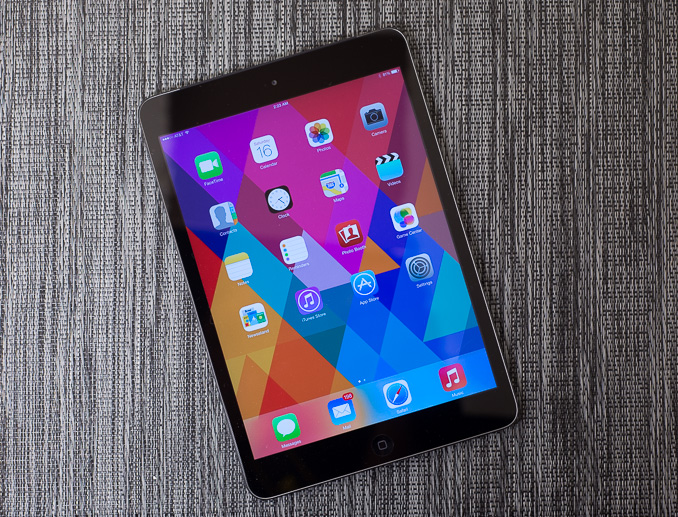
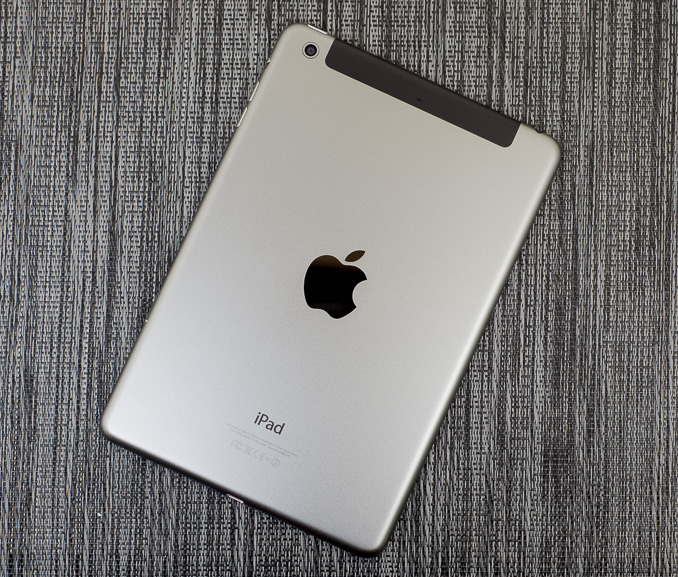
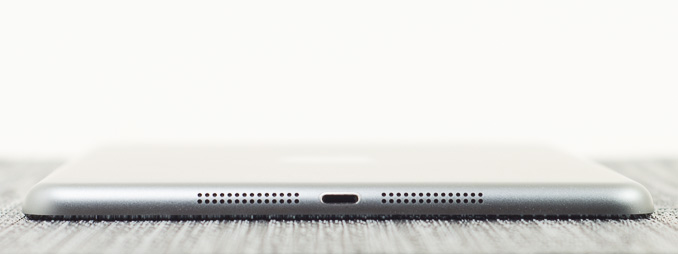






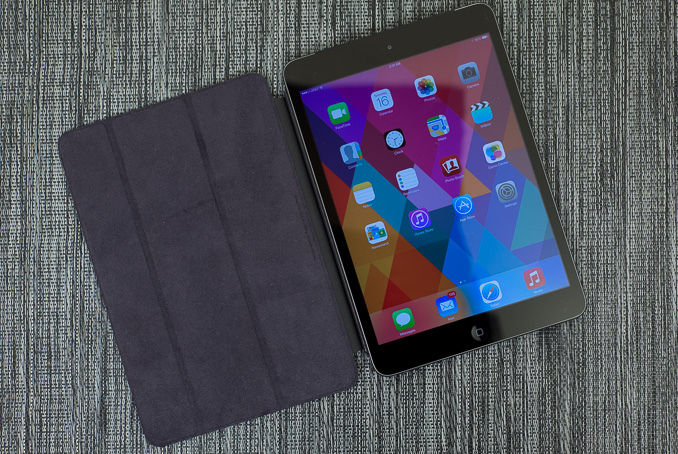
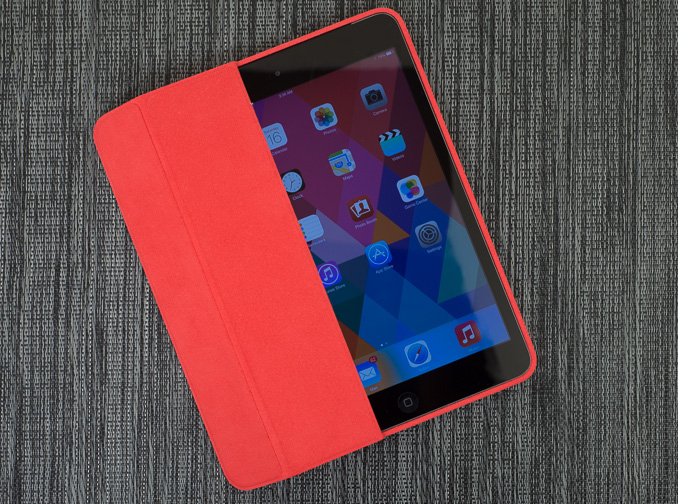









345 Comments
View All Comments
BPB - Saturday, November 16, 2013 - link
Came here just to see if the Apple love would be 10 out of 10, or 11 out of 10. Not surprised it's an 11.Jaaap - Saturday, November 16, 2013 - link
There are also al lot of verifiable facts in the article.BearT - Saturday, November 16, 2013 - link
Liked the article: 1. The display of iPad mini w/ Retina is superb, and its size dwarfs that of others in this category (e.g. Nexus 7). This matters to me as I read magazines in portrait mode. 2. I tried the browsers from a number of devices. The "Reader" feature of Safari is a must, if you loathe online ads as much as I do. 3. The high fidelity of the FaceTime "audio" is uncanny; one has to try it to appreciate the "pin-drop" sound across the globe, okay, just the long-distance. The normal phone audio doesn't come close in clarity!eggcustard - Sunday, November 17, 2013 - link
I use Readability on my N7.RannXeroxx - Sunday, November 24, 2013 - link
Looks like an interesting app, going to try it out. Thanks.julandorid - Sunday, November 17, 2013 - link
Actually, the final rating is pretty accurate! The review mention all of the important flaws as the quality of the display which is still decent but not quite as good as it is on the Nexus 7. Also a very important thing is the price. The author of this review is not convinced that (double) price is justified anyhow. Actually the contrary. He practically encourage the buyers to take the Nexus 7 in serious consideration.My personal opinion is the display is not that bad as it is described, but it is entirely a conscious decision made by Apple to calibrate the display with much lower brightens in order to achieve a good battery and correct gamma. If they decided to put an extra power to the led backlight and does a different calibration then I guess we would have a better screen but in the expense of pretty bad battery life. Apple did a smart move by offering great performance and good battery life. Probably no body will notice the display since it is already better (I mean sharper) that it was previously. That gives Apple another chance, next year to advertize an even better iPad mini.
The only serious concern that I have is the price! It is a known fact for years that Apple never rise the price (because it is already too high anyway) and always keep it the same while refreshing the product's internal and external components with better ones. However this year they decided to do the opposite - to increase the price even further.
So, for me was no-brainer to go with the new Nexus 7. Great device, great display. I always smile when I look at it.
Mahadragon - Sunday, November 17, 2013 - link
True, Apple generally keeps the price of devices like the iPhone and iPad the same. The iPhone 5S is the same price as the iPhone 5, however, you fail to take into consideration that the iPhone 5S has the same screen as the iPhone 5. The 5S has a finger print sensor and uses the A7 processor, those were the upgrades.The iPad Mini (original) made 2 steps up in processing power going from the A5 to the A7 processor and made a massive leap in resolution going to the retina screen. The Mini Retina also requires a much larger battery than the previous Mini to power all that nice hi-resolution screen which actually forced Apple to make an iPad Mini that is thicker and slightly heavier than the previous generation.
In short, the upgrade path from the original Mini to the Mini Retina was not a standard upgrade. It was a massive upgrade which prompted a much larger price increase.
winkgood - Monday, November 18, 2013 - link
Sounds like you are just making excuses for Apple. When they went from the ipad 2 (non-retina) to ipad 3 (retina), they kept the same price even though the new device has a better soc and higher resolution. (2 steps up)I believe they kept the same price point when they went from the iphone 3gs to 4 and from the 4s to 5, both of which involved improved screens and better guts. (2 steps up)
They got greedy and wanted to keep their insanely high margins.
ws3 - Monday, November 18, 2013 - link
Apple's margins are not insanely high, as proven by the fact that for most of their products, they sell everything they make. How long has the iPhone 5s been out now and most Apple stores still can't keep them in stock.ELPCU - Monday, November 18, 2013 - link
There is no doubt that Apple's margin are insanely high. Especially in phone area, they are making a tons of margin per phone. I do not know how can u say this stupid argument. Don't you see how expensive every fucking Apple accessory is? Don't you see how much apple makes u pay for increase tiny bit of storage? Go check isuppli, and look up their bill of material.I need to admit iPad, especially iPad mini series with 16GB wifi's margin is not too high, but margin from iphone per every fucking phone is just ridiculus. Why? because your phone cost is very deceptive, since 2/3~ish price is hidden under contract. You feels you are just paying 200 bucks per phone(for lowest storage), but apple takes bunch of money from AT&T or T-mobile, etc. You are actually paying 650 bucks(unlocked phone price). Most of iphone series have approximately SAMEish bill of material. around 200 bucks including manufactuing cost, and margin rates of higher storage one gets increased even more.
Bill of material is not exact number used for calculating margin, because of warranty cost, marketing cost, licensing cost, etc, but if you uses 150% of BOM, which will give very close number of real unit price.
Which means apple is making more than 100% margin rate in phone market.
You think more than 100% of margin rate is not insanely high? you must be kidding me.